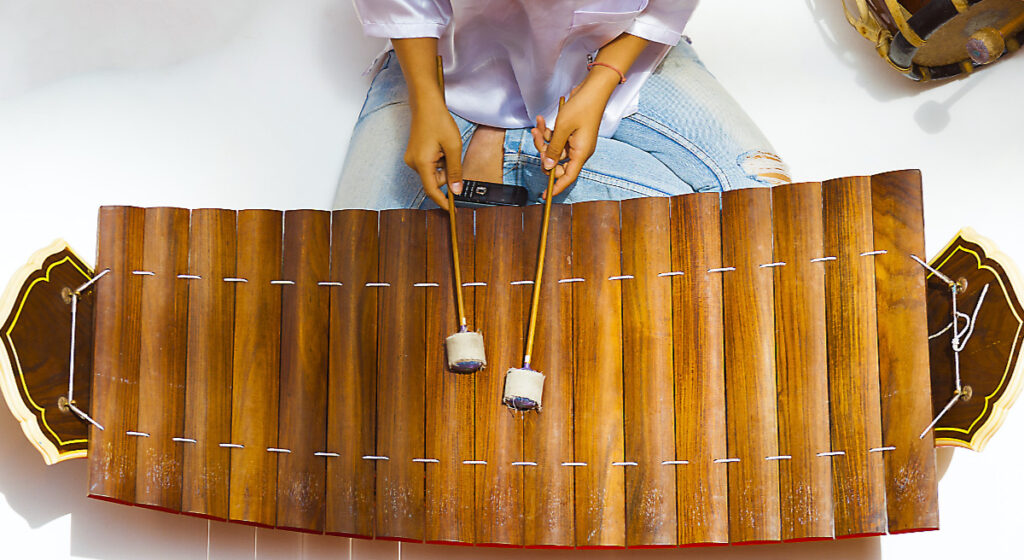Thai: ระนาดเอก (ranad ek); ระนาดทุ้ม (ranad thum)
Also: ranat, rinat, rinaad; thume
The ranad ek is a kind of high-pitched xylophone from Thailand, often comprised of either 21 or 22 bars made of bamboo or other hard wood. The lower-pitched ranad thum is based on the ranad ek, but has longer, wider keys. In both, the bars hang together on strings, and the instruments are shaped like boats. They are used in traditional Thai folk ensembles like the pi phat.
The ranad ek leads its ensemble. The instrument demands a considerable degree of skill, and there are different styles of music played with it. It eveloved from an older instrument called a grap khu, which was two pieces of bamboo (each called a grap) that were banged together to keep rhythm. The grap got its name from the sound made by the pieces striking each other — grap! grap!
Browse 26 current Ranad ek/thum xylophone music for sale offers here
The ranad ek was simple in concept: people hung several different sizes of grap together on a string. But the ranad ek has a completely different function than the grap did, because it can be used for melody whereas the grap was rhythm only. The instrument is rather large (the biggest key is 38 cm, or 15 inches, long) and is often ornately decorated so that it resembles a piece of furniture rather than a musical instrument.
Experts aren’t sure how the ranad ek was born. It may have been a purely Thai invention, or the concept may have come from another country. Even the etymology of the name isn’t agreed upon. What is known is that today, the instrument is Thailand’s main entry into the world of Asian xylophones.
Malaysian Batik: The Beauty of Uniqueness
The ranad thum’s history is more fully understood. It was a variation of the ranad ek with bigger and fewer keys. It was first fashioned in the early 1800’s. The overall width of the ranad thum is the same as the ranad ek – 125 cm long, or 49 inches. The teakwood stand of the ranat thum is different from that of the ranad ek — the former is a long box, while the latter is styled like a Thai boat.
There are variations of each of these instruments made with metal keys. These are called ranad ek lek and ranad thum lek. They both originated in the mid 1800’s.
The ranad ek (and, to a lesser extent, the ranat thum) feature in many types of percussive Thai ensembles, notably the pi phat. There are 6-, 8- and 10-instrument pi phat ensembles, all of which include the ranad ek. The pi phat is related to the Cambodian pinpeat orchestras.
See also: Khene bamboo flute: The music of Thailand and Laos
Maha Chakri Sirindhorn, Thailand’s beloved princess, is an accomplished musician and widely known for her mastery of the ranad ek.








